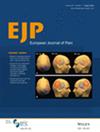Socioeconomic Position and Chronic Opioid Use After Hip Fracture Surgery: A Danish Population-Based Cohort Study
Abstract
Background
Chronic opioid use is a common and serious consequence of hip fracture. We examined the association between socioeconomic position (SEP) and chronic opioid use after hip fracture surgery.
Methods
Using nationwide Danish registries, we included patients aged ≥ 65 years undergoing hip fracture surgery in 2012–2021 (n = 52,801). Cohabitation, liquid assets, and education were markers of SEP. Chronic opioid use was defined as ≥ 2 prescriptions of opioids 31–365 days post-surgery. For the same period, all opioid doses were converted to morphine milligram equivalents (MME), mg/day. We used log-binomial regression to estimate adjusted risk ratios (aRR) with 95%-confidence intervals (CI) comparing patients within each SEP marker, adjusting for relevant confounding.
Results
The 1-year risks of chronic opioid use were 33% for patients living alone versus 30% for patients cohabiting (aRR 1.05 [CI 1.02–1.09]), 37% for low versus 28% for high levels of liquid assets (aRR 1.28 [CI 1.23–1.34]), and 33% for low versus 28% for high education (aRR 1.19 [CI 1.14–1.25]). Patients living alone used 11.5 MME mg/day versus 9.8 mg/day in patients cohabiting, patients with low liquid assets used 14.8 versus 7.9 mg/day in patients with high liquid assets, and patients with low education used 11.8 versus 7.9 mg/day in patients with high education.
Conclusions
About a third of hip fracture patients are using opioids continuously in the year after surgery. Living alone, less liquid assets, and low education were associated with a higher risk of opioid use and dosage of use, both in preoperative opioid users and non-users.
Significance Statement
This study shows that among patients undergoing hip fracture surgery, low socioeconomic position measured by living alone, having less liquid assets or low education is associated with a higher risk of chronic opioid use and higher dosage of use in the first year postoperatively. Clinicians should consider socioeconomic position when prescribing opioids after hip fracture. The integration of less addictive opioids and non-pharmacological approaches in the pain management may reduce opioid use and improve patient safety.

 求助内容:
求助内容: 应助结果提醒方式:
应助结果提醒方式:


